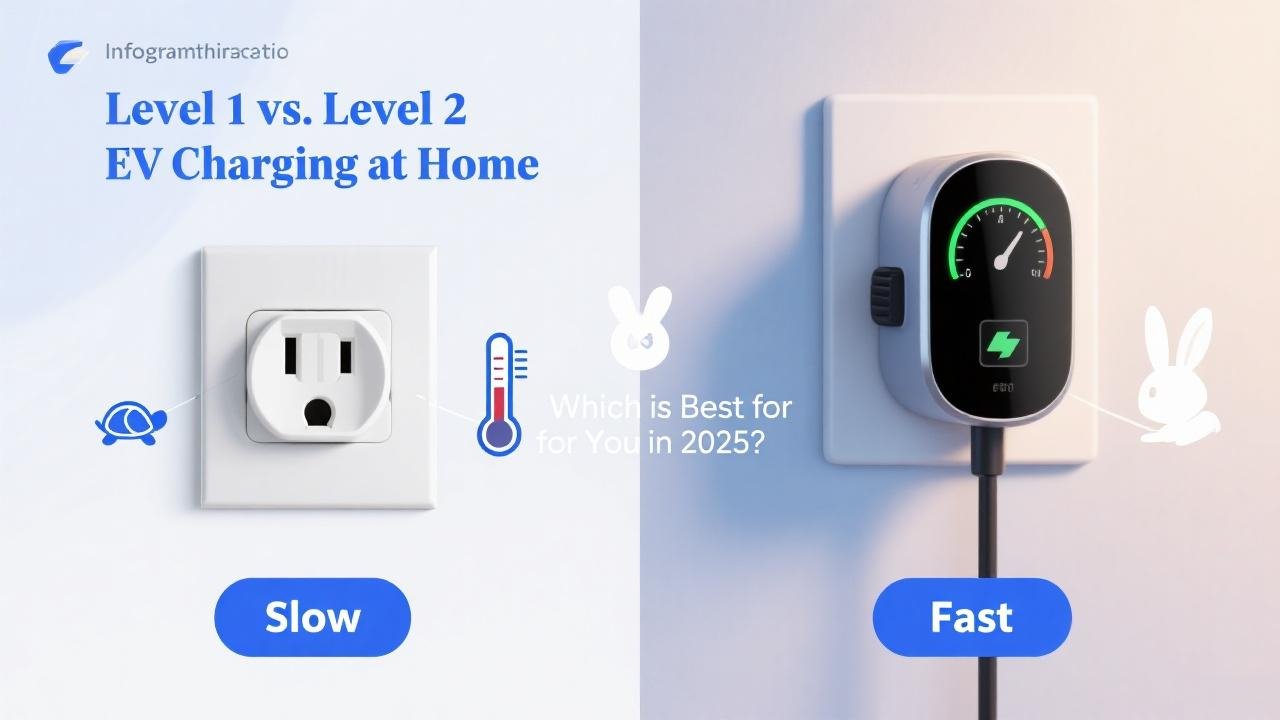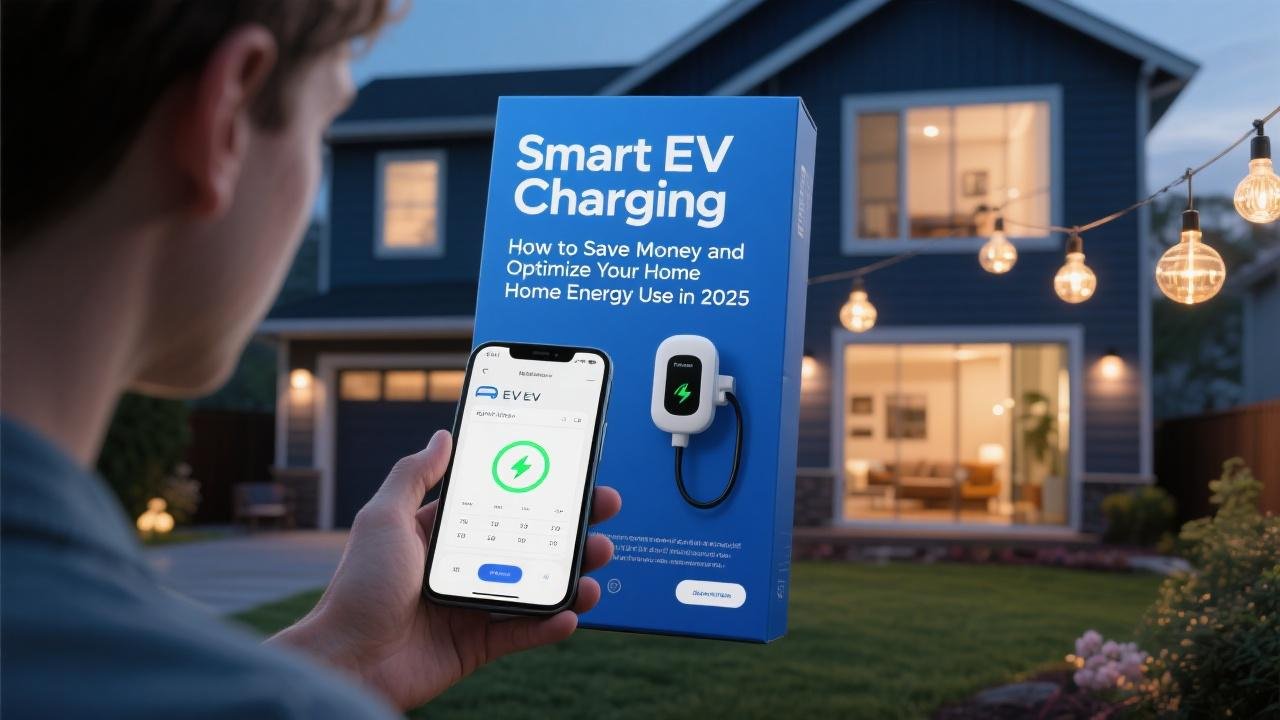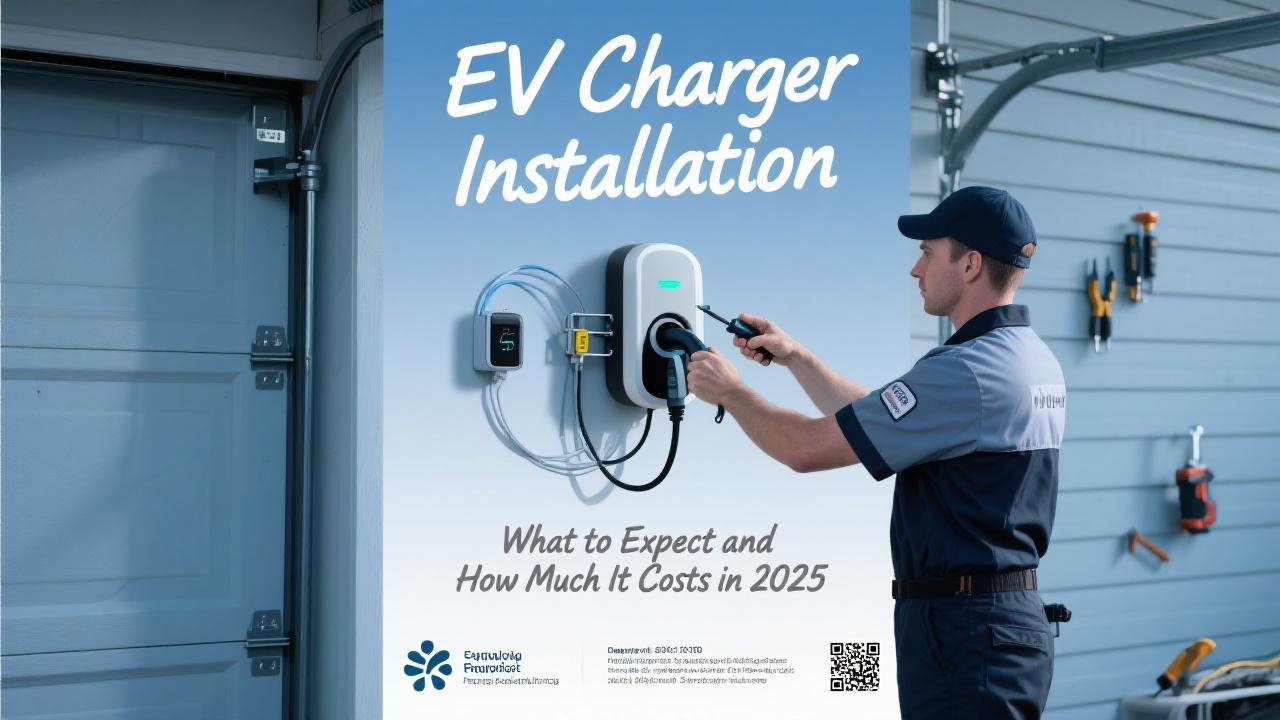Choosing Your Home Charging Speed
Welcome to the world of electric vehicles (EVs)! One of the first practical considerations you’ll encounter as an EV owner in 2025 is how to charge your car at home. You essentially have two main options for AC charging: Level 1 and Level 2. While both will get the job done, they differ significantly in charging speed, electrical requirements, and overall convenience. Understanding these differences is key to selecting the home charging setup that best fits your EV, your driving habits, and your lifestyle. This guide breaks down Level 1 and Level 2 home charging to help you make an informed decision.
Level 1 EV Charging: The Basic Plug-and-Play Option
- What it is: Level 1 charging uses a standard 120-volt AC household outlet – the same kind you use for your lamps and toaster. Most EVs come with a Level 1 charging cord (often called an EVSE – Electric Vehicle Supply Equipment) that you can simply plug into any available grounded wall socket.
- Charging Speed: This is the slowest way to charge an EV. Level 1 charging typically adds about 2 to 5 miles of range per hour of charging.
- Implication: For a battery electric vehicle (BEV) with a 200-mile range, a full charge could take 40 hours or more. For a plug-in hybrid (PHEV) with a smaller battery (e.g., 30-50 miles of electric range), a full charge might take 6-12 hours.
- Equipment Cost: The charging cord is often included with the vehicle purchase, or a replacement costs around $0-$200.
- Installation: No special installation is required beyond having a standard, grounded household outlet in a convenient location (like your garage or driveway).
- Pros:
- No Installation Cost: Uses existing outlets.
- Portability: You can take the Level 1 cord with you and charge anywhere there’s a standard outlet.
- Sufficient for Some PHEV Owners: If you have a PHEV with a small battery and can charge overnight, Level 1 might meet your daily needs.
- Good for Occasional Top-Ups: Can be useful for adding a few miles if needed.
- Cons:
- Very Slow: Impractical as the primary charging method for most BEV owners, especially if you drive significant daily mileage.
- Less Efficient Over Long Periods: Extended charging times on Level 1 can sometimes result in slightly higher overall energy consumption due to longer periods of the car’s systems being active during charging, compared to quicker Level 2 sessions.
- May Not Keep Up with Daily Use: If you drive more than 30-40 miles a day, Level 1 charging overnight might not fully replenish the range used.
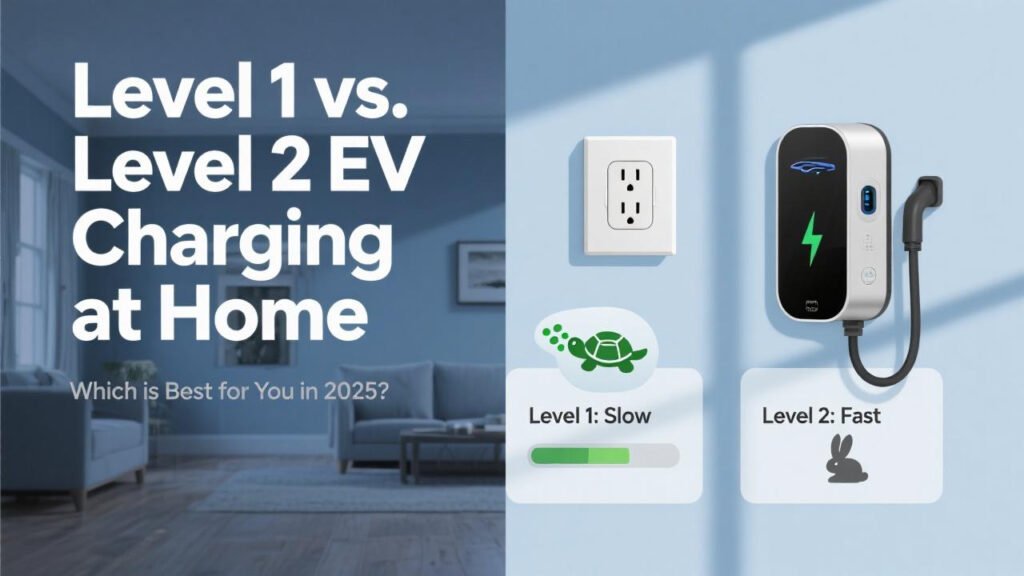
Level 2 EV Charging: The Faster, More Convenient Standard
- What it is: Level 2 charging uses a 240-volt AC circuit, similar to what powers large appliances like electric dryers, ovens, or central air conditioners. It requires dedicated charging equipment (a Level 2 EVSE or “charger”) to be installed.
- Charging Speed: Significantly faster than Level 1. Level 2 chargers typically add about 10 to 60 miles of range per hour, with a common rate around 25 miles per hour.
- Implication: Most BEVs can get a full charge in 4-10 hours, making overnight charging highly effective for replenishing daily driving range or fully charging an empty battery.
- Equipment Cost: The Level 2 charger unit itself typically costs between $300 and $1,000+.
- Installation: Requires professional installation by a licensed electrician. This involves installing a dedicated 240V circuit from your main electrical panel to the charger location, and either hardwiring the charger or installing a 240V NEMA outlet (e.g., NEMA 14-50). Installation costs can range from $500 to $2,000 or more, depending on complexity.
- Pros:
- Much Faster Charging: The primary advantage. Conveniently recharges your EV overnight or adds significant range in just a few hours.
- Handles Daily Driving Needs: Easily replenishes the typical daily commute for most BEV owners.
- Enables Smart Features: Many Level 2 chargers are “smart” chargers, offering features like scheduled charging (to take advantage of off-peak electricity rates), remote monitoring, and usage tracking via smartphone apps.
- Potentially More Cost-Effective Long-Term: Faster, more efficient charging cycles, especially when combined with TOU rate optimization, can lead to lower overall charging costs compared to prolonged Level 1 use.
- Cons:
- Higher Upfront Cost: Requires purchasing the charger and paying for professional installation.
- Requires 240V Circuit: Installation might be more complex or expensive if your electrical panel needs an upgrade or if the wiring run is long.
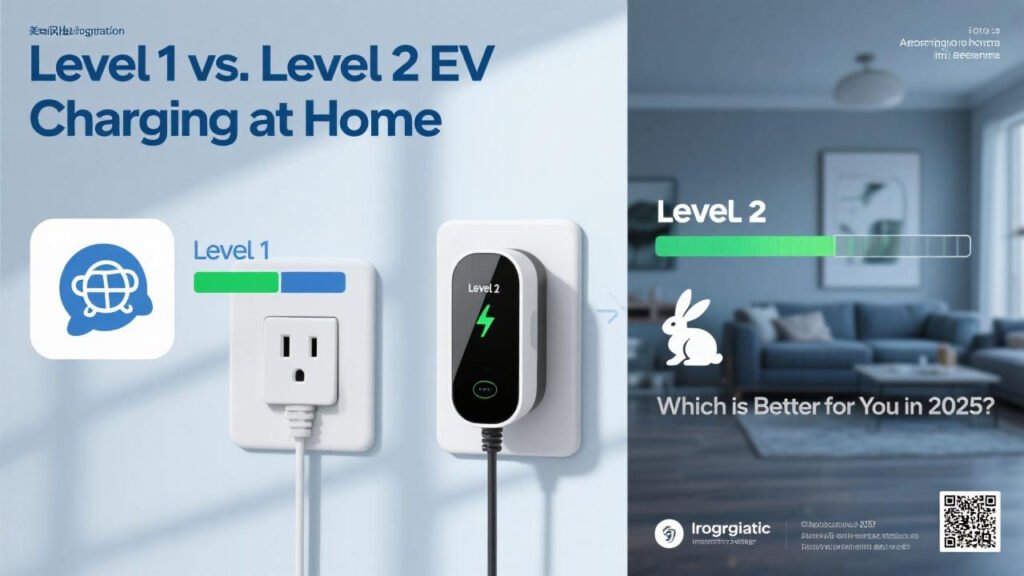
Which Level is Right for Your Home in 2025?
The choice between Level 1 and Level 2 charging largely depends on:
- Your Vehicle Type:
- PHEV Owners: If you have a plug-in hybrid with a smaller battery and relatively short electric range (e.g., under 50 miles), Level 1 charging overnight might be perfectly adequate.
- BEV Owners: For most battery electric vehicle owners, a Level 2 charger is highly recommended as the primary home charging solution due to the larger battery sizes and daily range needs.
- Your Daily Driving Distance:
- If you drive less than 30-40 miles per day, you might be able to get by with Level 1 overnight charging.
- If you drive more, or want the flexibility to quickly add significant range, Level 2 is far superior.
- Your Access to Workplace or Public Charging: If you have regular, reliable access to Level 2 charging at work or public stations, you might supplement that with Level 1 at home. However, home charging offers the most convenience.
- Your Budget: Level 1 has minimal upfront cost. Level 2 involves an investment in the charger and installation. However, consider the long-term convenience and potential cost savings from smart Level 2 charging features.
- Desire for Smart Features: If you want scheduled charging to save on TOU rates, remote monitoring, or solar integration, you’ll need a smart Level 2 charger.
Table: Level 1 vs. Level 2 EV Charging at a Glance
| Feature | Level 1 Charging | Level 2 Charging |
|---|---|---|
| Voltage | 120V AC (Standard Outlet) | 240V AC (Dedicated Circuit) |
| Typical Range Added per Hour | 2-5 miles | 10-60 miles (avg. ~25) |
| Full Charge Time (BEV) | 20+ hours (often much more) | 4-10 hours |
| Equipment Cost | $0-$200 (often included with EV) | $300-$1,000+ (charger unit) |
| Installation Cost | $0 | $500-$2,000+ (professional electrician) |
| Primary Use Case | PHEVs with small batteries, occasional BEV top-ups | Primary home charging for BEVs, faster PHEV charging |
| Smart Features | No | Commonly available (scheduling, remote monitoring) |
Investing in Charging Convenience and Speed
For most EV owners in 2025, especially those with battery electric vehicles, installing a Level 2 charger is the recommended and most practical solution for home charging. While Level 1 charging offers a no-cost entry point, its slow speed makes it inconvenient for daily use with larger EV batteries. The significantly faster charging times of Level 2, coupled with the availability of smart features that can save you money on electricity bills, provide a far superior ownership experience.
When planning your home EV charging setup, consult with a licensed electrician to assess your home’s electrical system and provide quotes for Level 2 charger installation. Consider your driving needs, your EV’s capabilities, and your budget to make the best choice for powering your electric journey.

